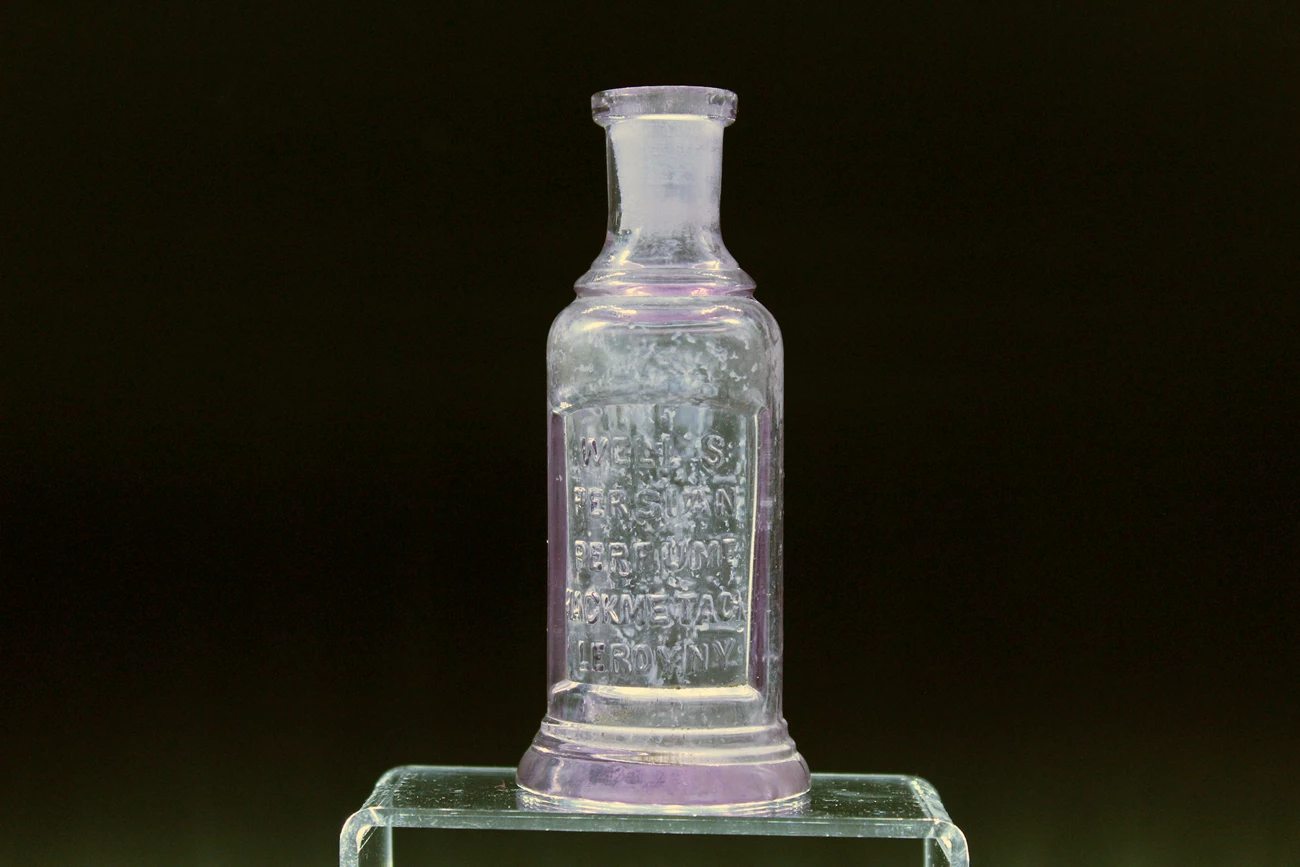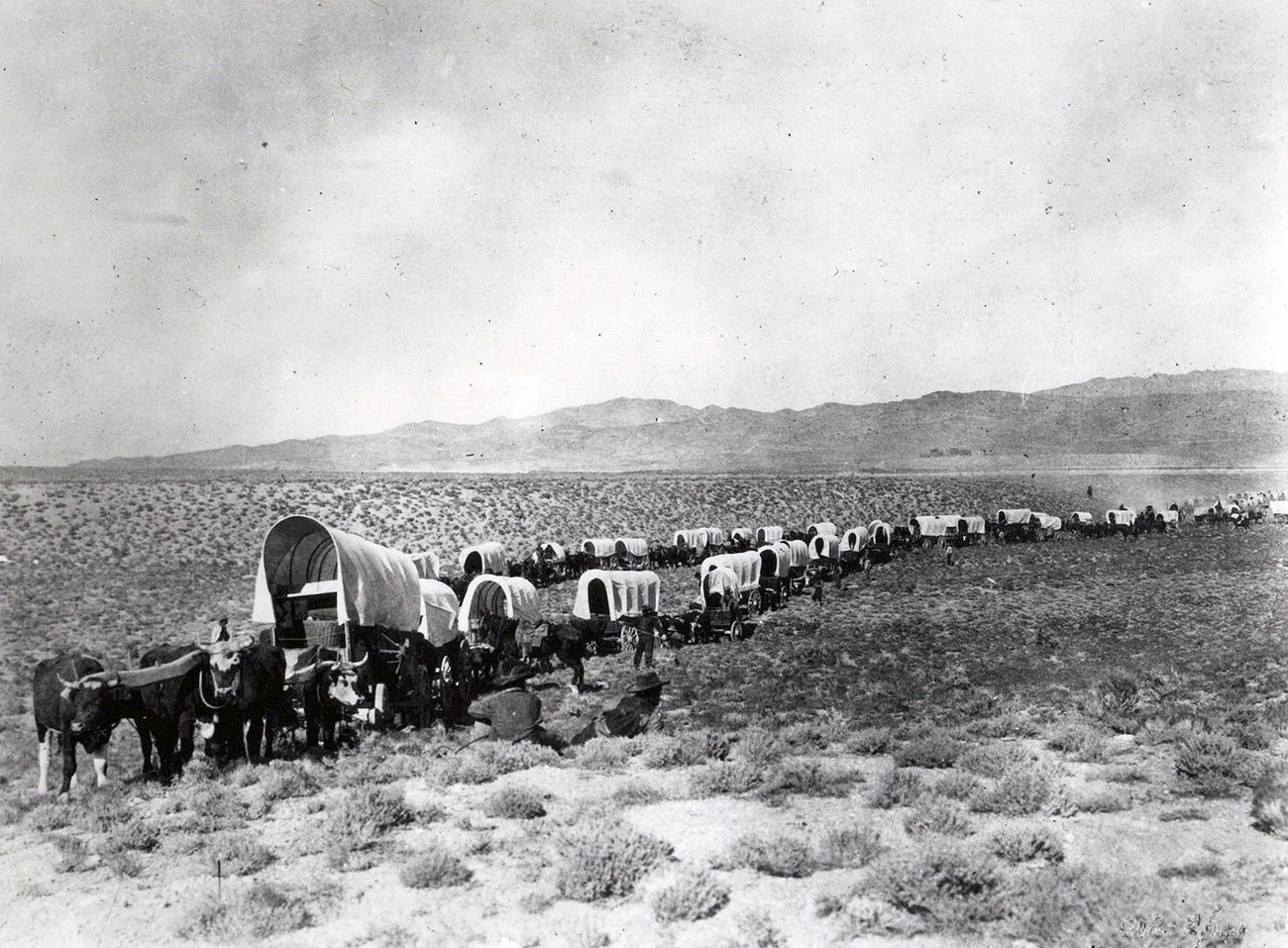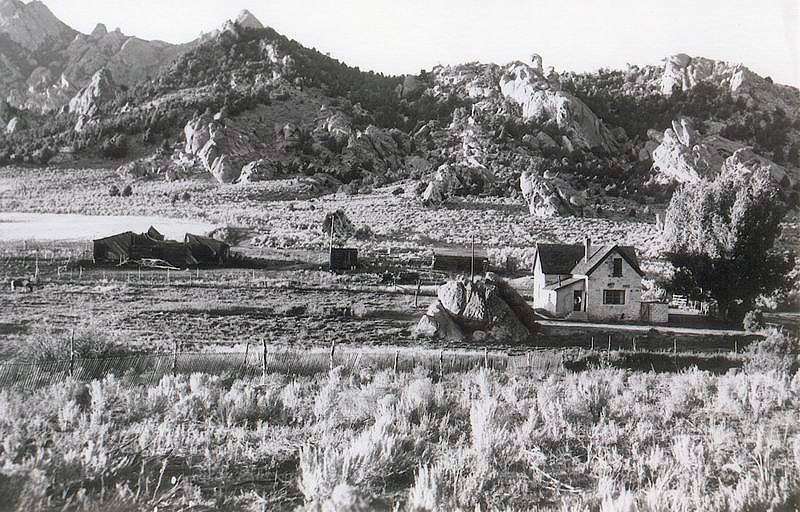Part of a series of articles titled Home and Homelands Exhibition: Work.
Article
Clara Campbell’s Perfume Bottle

NPS Collections, City of Rocks National Reserve
Article written by Nicole Martin, PhD
In 2021, a National Park Service (NPS) employee found an antique glass perfume bottle partially buried on a ridge within City of Rocks National Reserve in Almo, Idaho. Turned a striking purple color from sun exposure, the perfume bottle is embossed with the words: WELLS PERSIAN PERFUME HACKMETACK LEROY, NY. By the early 1880s, S.C. Wells & Co. had introduced this perfume alongside their popular medicinal line of “Shiloh’s Family Remedies.”1 Who had brought this bottle, manufactured in New York, to a sparsely populated area of the Pacific West?
In 2021, a National Park Service (NPS) employee found an antique glass perfume bottle partially buried on a ridge within City of Rocks National Reserve in Almo, Idaho. Turned a striking purple color from sun exposure, the perfume bottle is embossed with the words: WELLS PERSIAN PERFUME HACKMETACK LEROY, NY. By the early 1880s, S.C. Wells & Co. had introduced this perfume alongside their popular medicinal line of “Shiloh’s Family Remedies.”1 Who had brought this bottle, manufactured in New York, to a sparsely populated area of the Pacific West?
NPS staff determined the bottle likely belonged to Clara Campbell, since they found the bottle near where her house was believed to be located in the early 1900s.2 Clara filed one of only 29 homestead patents in the area between 1910-1919. When she initiated the patent process in 1909, she was a divorced, single woman. Clara was undoubtedly tough to try her hand at homesteading in the dry, unforgiving environment that defines City of Rocks.3 Her possible connection to the perfume bottle suggests a series of contrasts that highlight the complexity women faced when homesteading in the early-1900s West.
Almo shared little in common with the small New York towns Clara lived most of her life in. City of Rocks has long been part of the homeland of the Shoshone and Bannock people, who collect pine nuts in the area in the fall. During the mid-nineteenth century, City of Rocks became an important crossroads, first as a place connecting two overland trails and later as a stage station connecting a Utah railroad line to Idaho’s mining hub in Boise.5 However, even at the height of its homesteading period in the early 1900s, City of Rocks remained an exceptionally rural place with few amenities. Clara’s perfume bottle has survived as material evidence of a time when Anglo-American settlers attempted to populate the area not just with farms but also a sense of home.
Proving Up through Domesticity
Born in Orleans, New York in 1861, Clara moved around the state with her family until she married Hezekiah Campbell, a farmer, in 1878. Clara and her husband remained in New York as their family grew to include eight children. Sometime in the early 1900s, Hezekiah left the family, and Clara moved to the Far West with her three youngest children. She possibly moved to be near one of her older daughters, Jennie Maude, and son-in-law, John Hull, who had moved to Almo, Idaho to ranch. Whatever the case, a Utah judge granted her a divorce from Hezekiah on the grounds of non-support in 1908.4Almo shared little in common with the small New York towns Clara lived most of her life in. City of Rocks has long been part of the homeland of the Shoshone and Bannock people, who collect pine nuts in the area in the fall. During the mid-nineteenth century, City of Rocks became an important crossroads, first as a place connecting two overland trails and later as a stage station connecting a Utah railroad line to Idaho’s mining hub in Boise.5 However, even at the height of its homesteading period in the early 1900s, City of Rocks remained an exceptionally rural place with few amenities. Clara’s perfume bottle has survived as material evidence of a time when Anglo-American settlers attempted to populate the area not just with farms but also a sense of home.

NPS Photo
Divorced Homemaking in the West
As a divorced, single woman homesteader, Clara’s story also contrasts with the popular western image of pioneer families settling the West. In the decades after the Civil War, the divorce rate rose steadily in the U.S., especially in the American West. Many western states made obtaining a divorce relatively easy despite the popular fear that divorce endangered the sanctity of the American home. Clara was far from alone in her situation. The courts granted two-thirds of all divorces to women, with desertion and non-support a leading cause.7 Homesteading became one way a newly-divorced woman could acquire property and make a living.The number of women who claimed homesteads peaked after 1900. While gaining economic independence, challenging traditional gender roles, and exercising self-determination were all motivating factors, many women homesteaded to increase familial landholdings.8 Clara filed a claim near her daughter, suggesting an extended family enterprise. For women like Clara, homesteading may have been more about cooperation and family support than asserting individualism and independence.

NPS photo
Fleeting Home
Sometime before 1919, Clara sold her homestead and moved to Ogden, Utah with her new husband. She died there in 1929. Like the majority of homesteaders, she moved on. Her daughter and husband did the same, selling their ranch for the massively popular Ford Model T, and moved to California. Running a successful homestead in City of Rocks was difficult, unforgiving work. Making a home in the West often meant giving up and trying again elsewhere.10 The half-buried perfume bottle captures this fleeting moment, where one abandoned woman staked her claim.1 Richard E. Fike, The Bottle Book: A Comprehensive Guide to Historic, Embossed, Medicine Bottles (Salt Lake City : Peregrine Smith Books, 1987), 105-06, 229. See also, “Wells' Persian Perfume Hackmetack; Shiloh's Family Remedies,” illustrated trade card advertisement, S. C. Wells & Co, Proprietors, Le Roy, N. Y., July 10, 1883, Library Company of Philadelphia.
2 Email to the author from Shalene Dickard, National Park Service, May 25, 2023.
3 “History and Culture” and “Clara Campbell, the Stone House, and The Hulls,” City of Rocks National Reserve, National Park Service.
4 “Clara Campbell, the Stone House, and The Hulls.” See also “Divorce Granted,” Desert Evening News, August 22, 1908, 8.
5 “History and Culture.”
6 Amy Richter, At Home in Nineteenth-Century America: A Documentary History (New York: New York University Press, 2015), 132-33.
7 On divorce in the American West in the post-Civil War era, see Robert Griswold, Family and Divorce in California, 1850-1890: Victorian Illusions and Everyday Realities (Albany: State University of New York, 1982). For a nationwide analysis, see Glenda Riley, Divorce: An American Tradition (New York: Oxford University Press, 1991); and Nancy Cott, Public Vows: A History of Marriage and the Nation (Cambridge, Mass.: Harvard University Press, 2000).
8 Richard Edwards, Jacob K. Friefeld, Rebecca S. Wingo, Homesteading the Plains: Toward a New History (Lincoln: University of Nebraska Press, 2017), 130-45.
9 “Clara Campbell, the Stone House, and The Hulls.”
10 Ibid. Richard White, This Republic for Which It Stands: The United States During Reconstruction and the Gilded Age, 1865-1896 (New York: Oxford University Press, 2017), 142.
Last updated: June 11, 2024
